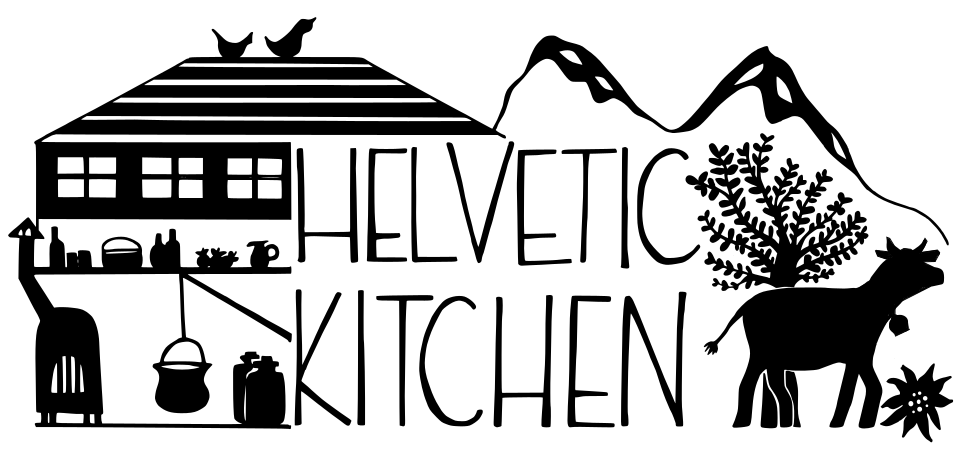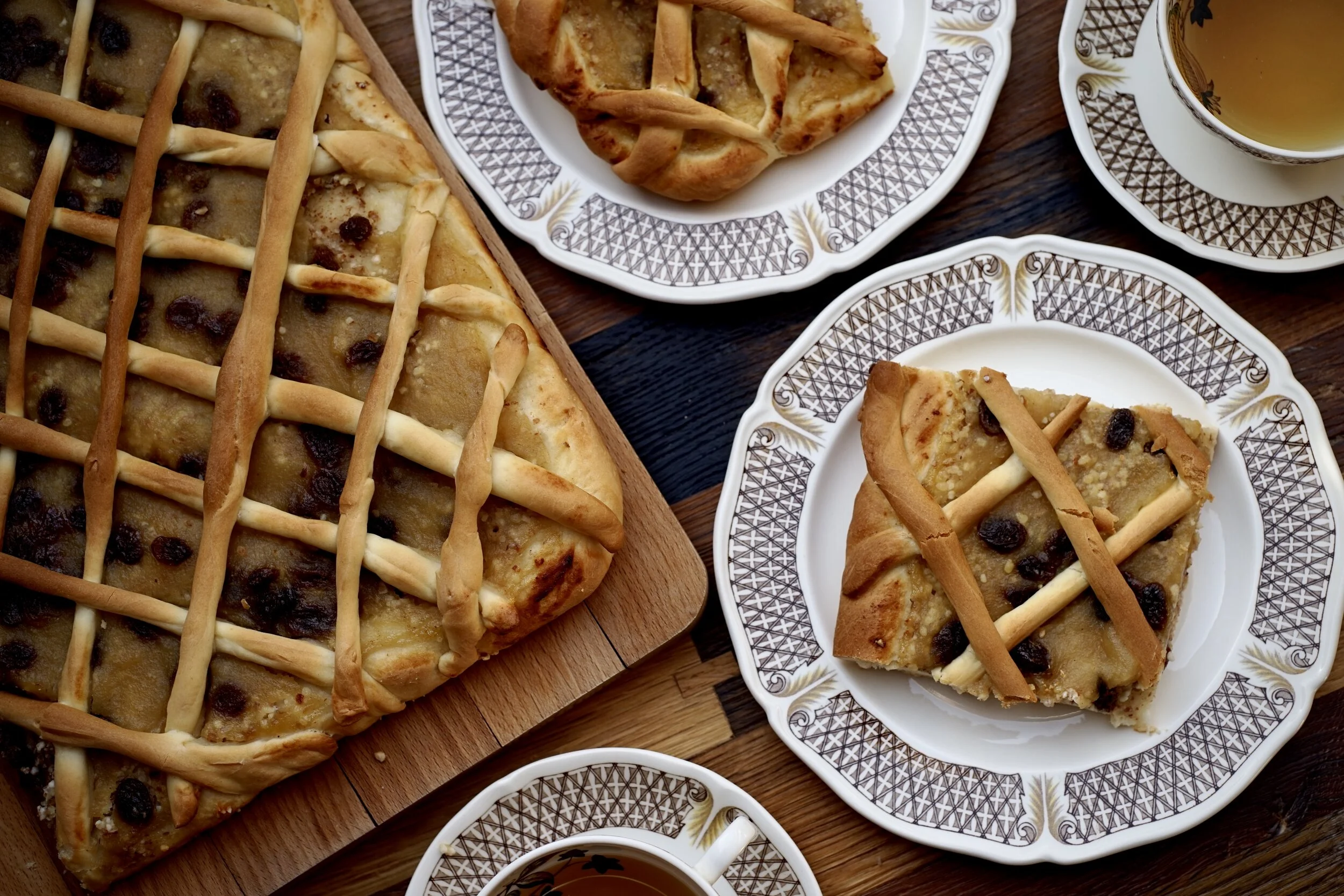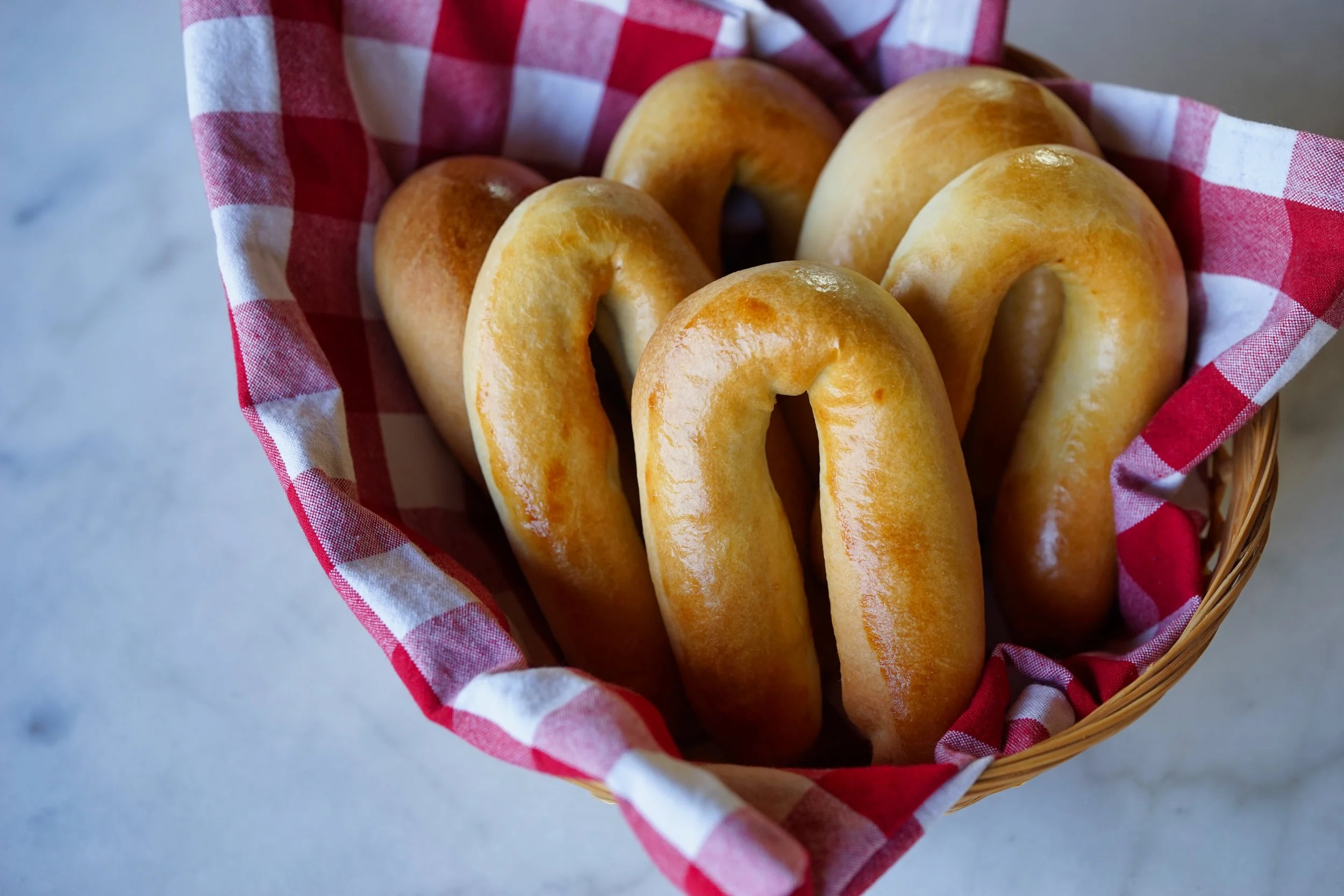Lostorfer Tartere
I found this recipe in my Solothurner Liebesbriefe cookbook (a wonderful collection of recipes and lore from that canton) and it has become a family favourite, especially beloved by my toddler who would eat her weight in applesauce if allowed.
It’s basically Zopf dough, spread on a baking sheet, covered with applesauce and raisins, then enhanced with a lovely lattice top. My little one was a great help on the lattice, rolling all the long ‘snakes’ needed to create the pattern.
According to Elisabeth Pfluger, the cookbook’s author and chronicler of all things Solothurn, the Tartere was made for celebrations, anything from birth to baptism to birthday parties. It was also a favourite during the winter holidays like Christmas, New Year’s and Fasnacht.
The apples that the farmers pick now, during the harvest, become a perfect addition to festive baking in the winter months. And with that in mind, she includes this saying next to the recipe:
Wär bim Heu nit gabled,
i der Aern nit zabled
und im Herbst nit früe ufstoht
cha luege, wies im Winter goht!
basically, those who do not work hard and get up early in the autumn to make hay and prepare for colder weather, will find out how unpleasant it will be in the winter.
(a note on the translation: I am pretty clear on what the first, third and last line mean (he who does not fork the hay, and does not get up early in the autumn, can see, how it will be in winter!), but I am only guessing at the second line i der Aern nit zabled.
Maybe it means something like, “who does not till the earth”. Zabled is like wiggle (they tell my munchkin “zable! zable! zable!” at swimming to get her to flutter kick) and maybe Aern is Erde, earth? Even sweetheart Sam had a look, shrugged, and said “Swiss German is hard”.)
As for Lostorf, the town that gives the tart its name, I’ve never been (but it does seem to have a pretty castle).
You can simplify this tart a lot— you could use another yeasted dough, like pizza dough, or you can easily substitute prepare canned or jarred apple sauce for homemade.
I have a sourdough starter, Bertie, and typically use it as a kind of flavour enhancer in doughs (along with commercial yeast). If you also have a sourdough starter, see below for instructions on how to add it to the recipe.
More on Bertie, plus how to make your own sourdough starter, here.
For the dough:
500 g flour
12 g salt
250 ml milk, room temperature
20 g fresh yeast, or 2 tsp dry yeast
80 g butter, soft
For the applesauce:
1 kg apples
1 tbsp cinnamon
To assemble:
100 g ground nuts
1 tbsp cinnamon
150 g raisins
1 egg yolk
In a large bowl, whisk together the flour and salt.
In another bowl, whisk together the milk and yeast.
Make a well in the flour and add the liquid ingredients. Stir this together until a dough starts to form, then add the butter and begin to knead it on the table. Knead for about 15 minutes, or until it is smooth and elastic. Alternatively, mix for about 10 minutes in a stand mixer with a dough hook.
Cover with plastic wrap and let rise for about an hour or until the dough has doubled in size.
In the meantime, make your applesauce:
Peel, core and chop the apples (firm and slightly sour work best) and put them in a large pot, adding a little water to prevent them from sticking to the bottom.
Cook over low heat until they soften completely and start to fall apart (cooking time will vary based on the type of apples you have), then add the cinnamon and whizz with an immersion blender until smooth.
Let cool.
When you are ready to bake:
Preheat oven to 200 C / 400 F / gas mark 6.
Reserve about 250 g of dough (to make the lattice), and roll the rest out into a large rectangle to cover a baking sheet (30 x 45 cm / 12 x 18 inches).
Sprinkle the ground nuts and cinnamon over the base, then spread the cooled applesauce on top.
With the remaining dough, roll long tubes and use them to make a lattice.
Brush the dough with egg yolk.
Bake for about 30 minutes, or until the top is golden and the bottom is fully baked.
My dough made about 880 g.
For me, around 1 kg of apples (before peeling and coring), eventually produces a little over 500 g applesauce (depending on your kind of apples). You can always use around this much prepared applesauce, if you aren’t keen on making your own.
I have also used a mix of apples and pears for the sauce—though the more pears you use, the thinner the sauce, as they contain more water.
I like to bake this using bottom heat, to prevent a soggy bottom.
With a Sourdough Starter
440 g flour
12 g salt
220 ml milk, room temperature
80 g sourdough starter
20 g fresh yeast, or 2 tsp dry yeast
80 g butter, soft
In a large bowl, whisk together the flour and salt.
In another bowl, mix together the milk, sourdough starter, and yeast.
Make a well in the flour and add the liquid ingredients. Stir this together until a dough starts to form, then add the butter and begin to knead it on the table.
Continue following the instructions above!
More applesauce?
Pumpkin Älplermagronen



















